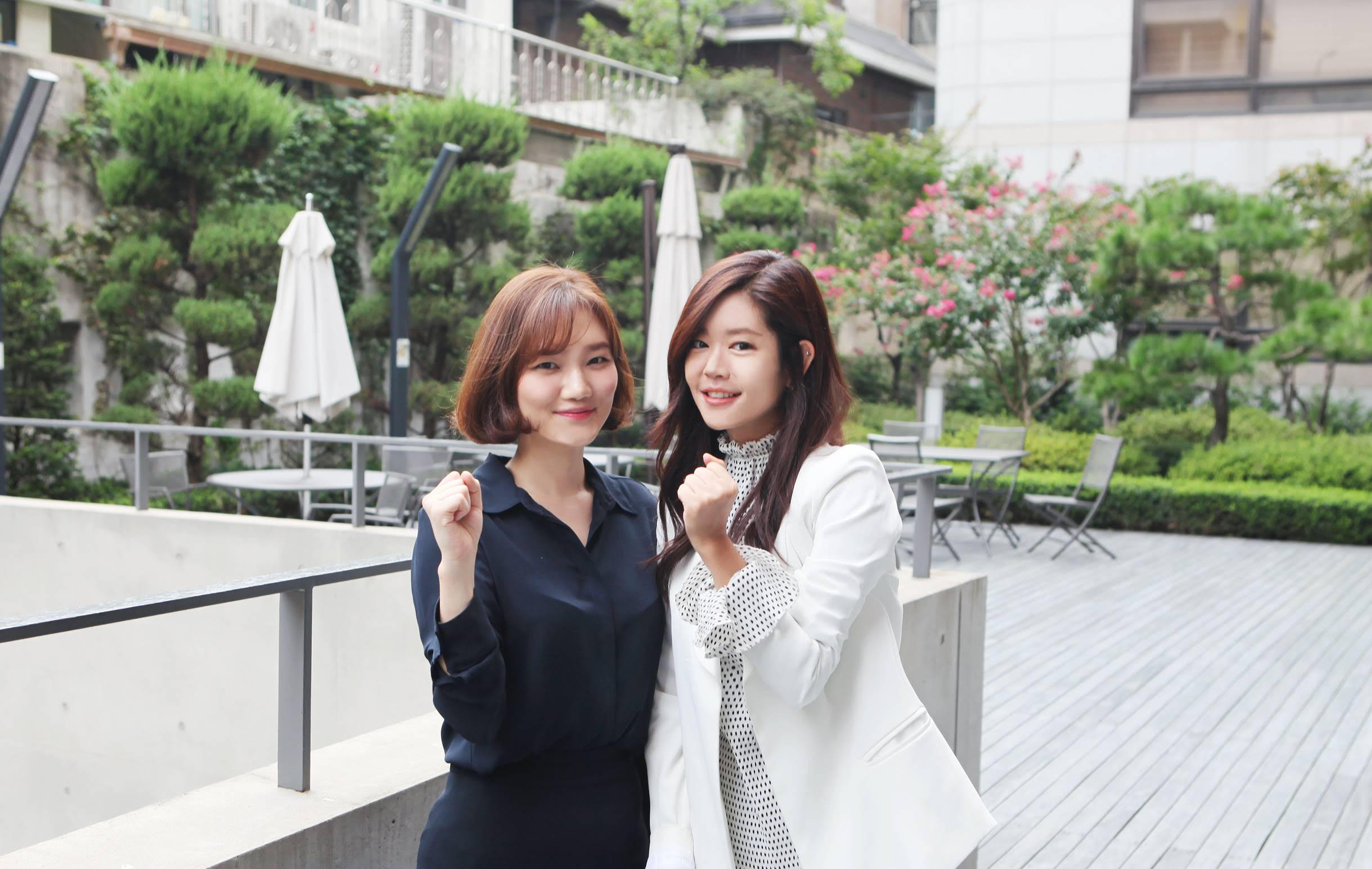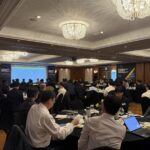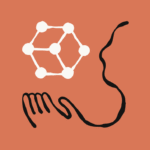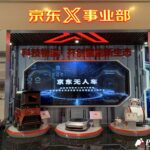
Swatch On, a company operated by Fabric Time(패브릭타임), is a platform that provides information on and sells fabrics in the Dongdaemun Fabric Market to independent designers overseas. The two co-founders noticed that there was no platform where the many types of fabrics were compiled into an online database and posted online. They tested the market for one and a half years and examined the business model.
Platum met with the two co-founders of Fabric Time, Yeon-Mi Jung (Jung) and Min-Ji Oh (Oh) to find out more about their service.
Platum: I heard that there is no fabric market in the world like the Dongdaemun Fabric Market
Jung: There are major fabric markets only in China and Korea. There are small streets concentrated with fabric shops in Europe and America, but it is rare that there are 3000 stores in one area like Dongdaemun.
Platum: Why is that?
Oh: The development of the Dongdaemun area has a close relationship with the domestic clothing market. The reason Korea’s clothing market developed is because of the Dongdaemun Fashion Cluster. Because raw materials, sewing, pattern design, and factories are all concentrated in one area, even small quantities of products can be produced very quickly. Therefore, even if a SPA brand emerges, the domestic clothing market continues to grow. However, in Europe, the number of local brands and road shops are very small compared to Korea. Due to the protection law on craftsmanship, the fashion industry runs on major brands. This is why it is difficult to form a large-scale commodity market.
Platum: Then where do overseas designers buy fabrics?
Jung: They have to participate in the offline fabric conferences that are held in seasons like F/W or S/S to see the actual fabrics and purchase them. Since the process is not done online at all, designers have difficulty finding and purchasing fabrics outside of conference seasons. There are fabric wholesalers who they have traded with in the past, but they are finding new fabrics in order to meet the needs of fast-changing market trends. The Dongdaemun Fabric Market has a competitive edge in terms of price, quality, and fabric diversity compared to offline conferences. This is why we thought we could meet the demand of overseas independent designers if we made an online database of fabrics in Dongdaemun.
Platum: Changing consumers’ behavior is challenging for all businesses. What kind of approach did you take to allow designers to buy fabrics online?
Oh: We are the first in the industry to provide videos of fabrics to buyers. It is difficult to grasp the characteristics of different types of fabrics by just looking at photos. We started making videos to show the weight, texture, and density of the fabric. When designers select a fabric they like, they can apply for a swatch (sample of the product) and receive it through international delivery. Usually, overseas wholesalers sell fabric samples for about USD 1 per piece, but since Dongdaemun offers samples for free, we were able to create a ‘free swatch box service’ that contains free fabric samples.
Platum: Do you act as an intermediary between designers and Dongdaemun?
Oh: No, not really. Once the order comes in, we go directly to Dongdaemun market and buy the fabric. In fact, the fabric stores do not know that this will go to the overseas designers. Our revenue comes from re-selling the fabric to overseas designers, at around double the original cost.
Fabric Time’s ultimate goal is to export the entire Dongdaemun Fashion Cluster
“Target customers for Fabric Time are independent designers rather than high-end brands. For luxury brands, it is not so difficult for them to find fabric because they focus on mass production. On the other hand, independent designers or small brands lack information and they have to buy small units of fabrics so it is difficult for them to find a suitable supplier. We saw the opportunity in this niche market”.
Platum: How do you attract international customers?
Oh: We participate in global fashion conferences and meet with independent designers. Out of the top 100 fashion events, we select major events that have the largest number of participants and we distribute free swatch samples and brochures to them. So, we go on a business trip to Paris in September, when there are a lot of fashion events. Also, we run promotions at the world’s leading fashion schools such as St. Martins and Parsons. We inform the students and professors who purchase a small amount of fabric for class, and raise awareness of our service so students can use our platform even after they graduate.
Platum: If the demand for an online fabric platform is so high, why didn’t other people try?
Jung: First of all, the independent designer market is quite new. According to the research, the top 100 brands account for 60% of global fashion sales. The fashion market is running based on big brands. However, in recent years, new independent designers have begun to grow as customers have come out to pursue their unique fashion identity. Dongdaemun is a place that can grow together with this emerging market. Chinese fabrics may be cheaper, but the problem is that they only deal with mass production. If independent designers want to buy from China, they have to pay 3 or 4 times more than the normal rate. In the 70s and 80s, Dongdaemun fabrics were one of Korea’s main export products. However, Chinese fabrics have now taken over the market share. The high-end fabric market is already dominated by Italy, so the Dongdaemun market also needs ways to break into this market. We want to be the bridge between the independent designers and the Dongdaemun market.
Platum: Finally, please tell us about your future goals.
Jung: Our short term goal is to have a database of 100,000 fabrics in the next 5 months. Currently, there are about 2 million to 3 million different kinds of fabrics being sold in Dongdaemun. Our end goal is to collect on over 1 million kinds of fabric.
Oh: Our ultimate goal is to bring the entire Dongdaemun Fabric Market online. We started with fabric, but there are many fields that we can expand to, such as the digital printing market or the wrinkling process of the fabric. As we mentioned above, we want to export the whole Dongdaemun Fashion Cluster to global markets. Thank you.
————————————————————————————-
This article, entitled “Interview: Fabric Time aims to bring the Dongdaemun Fabric Market online”, was written in Korean by Margot Jung of Platum, edited by AllTechAsia.






Leave a Comment